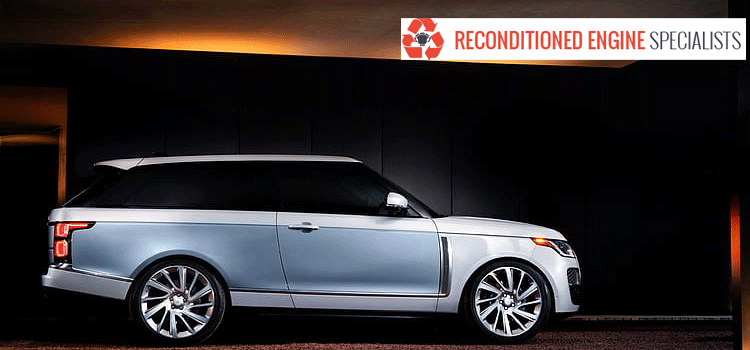How Does The Range Rover Engine 2.0 Support The Vehicle’s Suspension System?
The Range Rover 2.0 engine is known for its impressive balance between performance and fuel efficiency, with turbocharged power providing ample torque for various driving conditions. The suspension system, on the other hand, is responsible for maintaining comfort, stability, and control by absorbing shocks from uneven surfaces. In modern vehicles like the Range Rover, the relationship between the engine and suspension system is crucial for smooth, adaptable driving. From handling heavy loads to traversing rugged terrain, the engine’s output is coordinated with the suspension system’s adjustments, ensuring that the vehicle remains stable and comfortable.
Role of Torque and Power Delivery in Suspension Performance
The 2.0 engine’s torque and power delivery play an integral role in optimizing the suspension system. High torque levels, especially at low RPMs, provide the vehicle with the strength to push through uneven terrain, allowing the suspension system to operate efficiently. When the engine delivers power smoothly, it reduces strain on the suspension system, allowing it to maintain optimal shock absorption and ride height adjustments. On the flip side, erratic power delivery can strain the suspension, causing instability and a rougher ride. By maintaining a steady output of torque, the Range Rover 2.0 engine aids in distributing weight evenly across all four wheels, ensuring a balanced suspension response.
How Engine Braking Influences Suspension Behavior
Engine braking is another aspect where the Range Rover 2.0 engine enhances the performance of the suspension system. Engine braking refers to the engine’s ability to slow down the vehicle by reducing fuel intake and increasing compression within the engine. When going downhill or approaching a stop, this form of braking reduces reliance on the vehicle’s conventional braking system. This eases the pressure on the suspension, particularly during descents on rugged terrain. In effect, engine braking allows the suspension system to maintain better contact with the ground, preventing the vehicle from bouncing or jolting unnecessarily.
Adaptive Dynamics: Coordinating Engine and Suspension
Range Rovers are known for their advanced adaptive dynamics systems that automatically adjust the suspension based on driving conditions. The 2.0 engine supports this feature by providing real-time power adjustments that align with the vehicle’s suspension settings. For instance, when the vehicle is driving on a smooth highway, the engine can deliver consistent power while the suspension adjusts for minimal road surface variations. However, on rough terrain, the 2.0 engine works in conjunction with the suspension to offer more torque and stability, ensuring that the vehicle doesn’t lose traction. This seamless coordination ensures a balanced ride regardless of the driving conditions.
Load-Bearing Capacity and Engine Support
The Range Rover’s ability to carry heavy loads is one of its standout features. The 2.0 engine’s torque and power are essential in supporting the suspension when the vehicle is heavily loaded. A powerful engine helps ensure that the suspension doesn’t sag under pressure and can maintain the proper ride height, regardless of the load. Additionally, the engine’s ability to distribute power to all four wheels ensures that the suspension maintains proper balance, which is crucial for off-roading or hauling heavy cargo. In cases where the engine is not performing at its best, engine replacement or reconditioned engines can restore the power necessary to support the suspension during heavy-duty tasks.
Impact of Driving Modes on Engine and Suspension Synchronization
The Range Rover 2.0 engine is equipped with multiple driving modes, such as Comfort, Eco, Dynamic, and Off-Road, each designed to enhance different aspects of driving. These modes adjust not only the engine’s performance but also the suspension settings. For instance, in Off-Road mode, the engine provides more torque, and the suspension height is raised to tackle rough terrain. The synchronization between engine power and suspension adjustments ensures that the vehicle can handle any environment with ease. On the other hand, in Eco mode, the engine reduces power output to conserve fuel, and the suspension is tuned for smoother roads. This interplay is crucial for balancing performance and comfort in varying conditions.
Maintaining Suspension Health through Engine Efficiency
A well-functioning engine contributes to the longevity of the suspension system. When the 2.0 engine operates efficiently, it reduces the strain on the suspension, leading to less wear and tear. Over time, components of the suspension system like struts, springs, and shock absorbers can degrade due to excess load and stress. An engine replacement or the installation of a reconditioned engines can revitalize the vehicle’s overall performance, including that of the suspension system. Regular engine maintenance ensures that the suspension remains supported by a reliable source of power, thus extending its lifespan.
Importance of Engine Replacement and Reconditioned Engines for Suspension Performance
When the engine begins to show signs of wear, such as reduced power output or inefficiency, it directly affects the suspension’s ability to perform optimally. In such cases, an engine replacement or opting for a reconditioned engine becomes essential. Reconditioned engines are fully restored to ensure that they perform like new, offering all the benefits of a fresh engine at a fraction of the cost. Whether it’s a new or reconditioned engine, these options can be paired with supply and fit services, ensuring the installation process is seamless. This not only rejuvenates the engine but also supports the suspension, as the new or reconditioned engine delivers the necessary power for balanced handling.
Supply and Fit Services for Ensuring Engine-Suspension Harmony
When opting for engine replacement or reconditioned engines, choosing supply and fit services can ensure that the installation is done professionally, maintaining the harmony between the engine and suspension. Professional fitting services ensure that the new or reconditioned engine is perfectly synchronized with the vehicle’s suspension system. The alignment between engine power and suspension settings is crucial for optimal performance. Supply and fit services also ensure that the engine is fitted with precision, preventing any misalignment that could strain the suspension system, ensuring a smooth, balanced ride.



